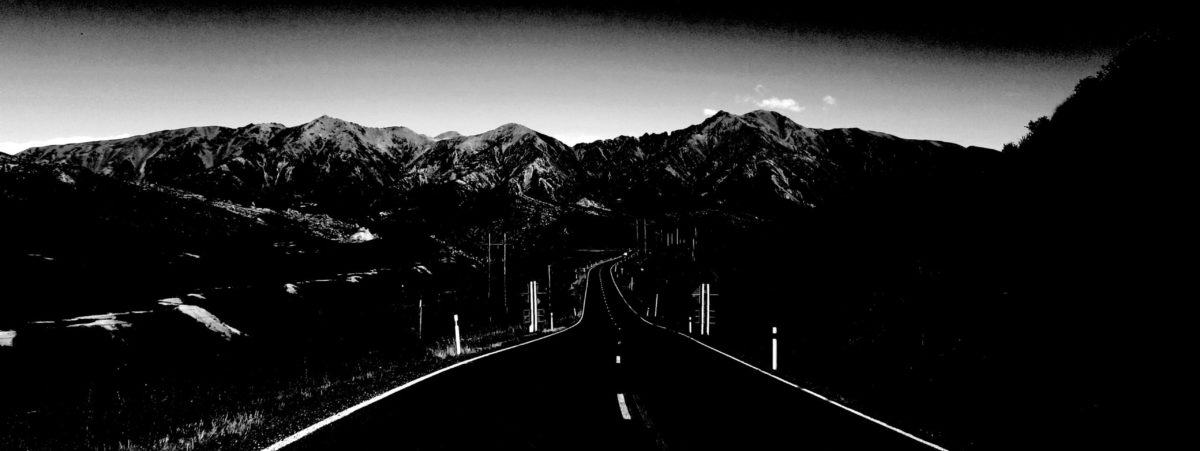
Label: Unsigned/Independent
Origin: London/Bristol, England
Deliberate and architectural, English newcomers Thundering Hooves craft a massively dense and brutally heavy debut blueprint with Vestiges. Addictive riffs, guttural grunts, and creeping tempo materialize as a blackened temple of doom with brick after distorted brick of brooding evil.
Opening track, “The Doomway,” engineers the design for the entire record. Mellow notes waft through the halls of ancient ruins upon an ungodly wind until devastating power chords descend upon the barren landscape. Percussive notes bounce off of dilapidated cinder blocks, decaying the bygone black metal relics that time has cast aside. Suddenly, the winds change course and the tempo quickens: the Luciferian architects have arrived on the scene, set to restore diabolical greatness to a once majestic throne. Lead vocalist Michael B. heaves Satyricon-inspired grunts whilst fabricating mighty pillars of stony riffs. Hammering drums smash rusted bolts into resistant threads on “Goatswood,” as welded guitars spin twisted nuts into place, erecting the framework of the great fortress. Agonizing riffs echo through the spartan halls carrying the mystical soundtrack of Khemmis and the wicked resolve of Black Sabbath.
Standout track, “Rex Nemorensis (King of the Grove),” is named for the priest of the Roman Goddess Diana, who attained his position by slaying the prior incumbent, and held it by preemptively murdering any who attempted to unseat him. The track begins with a 1975 recording of renowned horror/mythical actor Sir Christopher Lee discussing Satanic ceremonies, and curtails his sermon with an infernal instrumental curtain-raiser. Thundering Hooves incorporate critical minor chords within their construct’s skeleton, and caulk the blackened masonry together with oozing riffs. The spoken discussion returns later in the track, overlaying despondent distortion much like an Inquisition track, before echoed growls reverberate into silence.
Rex Nemorensis (4:56 - 9:08) Thundering Hooves - Vestiges (Full Album) - YouTube
The second half of Vestiges raises the more experimental rooms of the blackened castle. Fourth track “Mara” explores lofty chambers with ghostly notes before sculpting a soot-infested riff-dungeon with cursed chisels. This track showcases extreme cadence variations as well: some of the evil laborers work at breakneck speed, blast-beating new caverns with explosive charges, while others proceed slowly, as if preparing for a melancholic funeral dirge. “Pallid Gaze” opens with midtempo precision, progressing to choppier rhythm and split power chords, allowing thunderous bass to ripple beneath the surface – a bubbling mixture of molten metal reacting to the blacksmith’s fire. Unlike a lesser smith merely forging weapons into shape, Michael B. flexes and contorts strings of nickel-plated steel to create cataclysmically cosmic tones.
As the massive build nears completion, the architects gather around an epic bonfire smoldering in the great hall, ready to commence the final ritual of the ceremony: concluding track “Vestiges.” As the inferno rages on, nefariously voltaic riffs seal the development with the Sigil of the Baphomet. Unhinged chaos propagates through the build, culminating in a seismic solo registering off the scale, rupturing the very foundation of the wicked shrine to Satan. The mighty pillars crumble from the shockwave of Daniel B.’s tectonic percussion. The blackened ashes of the churlish blaze slowly levitate to the heavens and the forsaken temple collapses into the widening fissure, leaving only a trace of what once was.
Vestiges is an absolutely enthralling edifice of modern blackened heavy metal. Utilizing tools of death and doom metal, yet maintaining studied architectural loyalty to medieval gothic themes, Thundering Hooves delivers an unholy Satanic inner sanctum worthy of multiple pilgrimages.
FFO: Archgoat, Inquisition, Satyricon, Mgła









